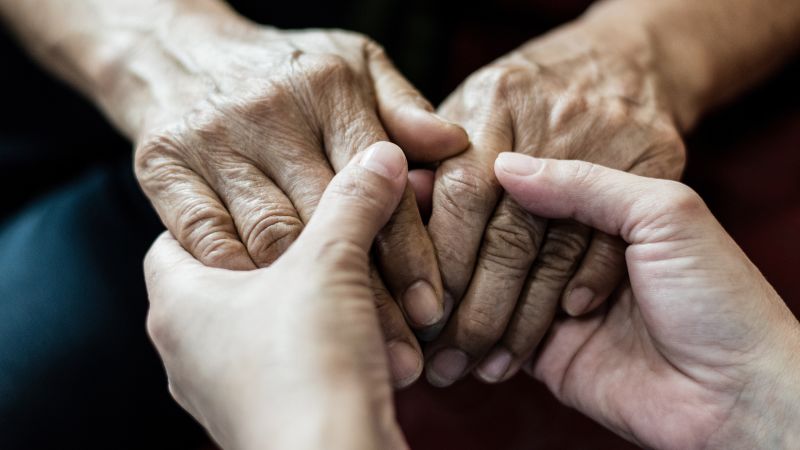NEWYou can now listen to Fox News articles!
Most people got poorer during the COVID lockdowns, probably poorer than they realize. They’re finding out now, unfortunately, but the tech companies got a whole lot richer and it’s simple. Why? Politicians forced the entire population indoors at gunpoint. Millions of people had no choice but to live out their lives in the lonely hell of the internet. That turned out to be a disaster for America as rising suicide rates now attest, but for Silicon Valley, it made for an epic payday and that epic payday was soon reflected epically on the balance sheets of its biggest local lenders, which was called Silicon Valley Bank.
In 2018, SVB had about $49 billion on deposit. Three years later, that same bank had amassed more than $189 billion. That is a gargantuan increase in deposits over a very short period of time. It was certainly dramatic enough to have raised a very serious question and an obvious one: What was Silicon Valley Bank going to do with all that money? Even in the San Francisco Bay Area, it would be hard to find qualified borrowers for $189 billion. You could not responsibly loan all of that money even if you wanted to.
So, what would you do with it? Now, that’s the question you would have asked if you were paying attention both from inside SVB or from the federal regulatory agencies in Washington, but it turns out nobody was paying attention. Nobody thought to ask that or many other questions. Nobody thought to stress-test Silicon Valley Bank in the middle of a boom and of course, that turned out to be a grave mistake, but the remaining question is, what were they doing at SVB and at the other banks that have either failed or come close to failing over the last week?
Well, they were doing what you would do if you were a mediocre but highly credentialed, irresponsible person with a narcissism complex who talked a lot about your ultra-marathons and your commitment to climate change if the central bank handed you trillions of dollars free with no strings attached. You would party like it was 1999. Or to update the reference, you would virtue-signal like it was 2023. You would spend hundreds of millions of dollars bragging about what a good person you are and that, of course, is exactly what they did.
BIDEN SAYS AMERICANS SHOULD ‘FEEL CONFIDENT’ IN BANKING SYSTEM AFTER FEDERAL RESPONSE TO SVB COLLAPSE
A customer stands outside of a shuttered Silicon Valley Bank (SVB) headquarters on March 10, 2023 in Santa Clara, California. Silicon Valley Bank was shut down on Friday morning by California regulators and was put in control of the U.S. Federal Deposit Insurance Corporation. (Justin Sullivan/Getty Images)
Consider Signature Bank. Now, Signature Bank was shut down by federal regulators this weekend on Sunday because it posed an imminent threat to the entire financial system. Its demise marked the third-largest bank collapse in American history. Why did Signature Bank fail? We could give you the technical, math-based answer, but here’s the real reason. Signature Bank failed because it was corrupt. That’s a strong charge. How do we know that? Well, simple. Its directors gave Barney Frank a board seat. That’s it. Frank is the same person who was a member of Congress from Massachusetts, wrote the banking regulations imposed on Signature Bank and all the other banks by Washington after the collapse.
Barney Frank has never had a real job. He has spent his entire life in politics. He’s elderly now, but he has no relevant experience or expertise. The only reason that Signature Bank hired him is because he once regulated Signature Bank. Now, if we were looking at a foreign country, we’d describe that instantly as what? A pay-off. The people who actually ran Signature Bank meanwhile, the so-called bankers, did not seem to spend a lot of time banking and of course, they didn’t need to bank really because the Fed was guaranteeing them a never-ending torrent of cash in the form of free money.
So, what did they do? Well, here is Scott Shay, the chairman of Signature Bank, welcoming his employees to a meeting of the bank’s critical Pride Council. This video is from last December, just months before Signature Bank slipped beneath the waves, and the Pride Council in question, as you will see in a moment, featured a self-described gender-queer, transmasculine person called Finn Brigham, who arrived to teach employees about pronoun use.
BIDEN ADMIN’S RESPONSE TO SILICON VALLEY BANK COLLAPSE IS THE ‘GREATEST FORM OF CORPORATE CRONYISM’: TIM SCOTT
SCOTT SHAY: I’m Scott Shay, chairman of Signature Bank, and it is a pleasure for me to welcome you to this multimedia, multi-casted, multi-spacial meeting of the Pride Council, and I’m just thrilled that there are about 40 people in the room. I understand there are something like 190 people at watch parties. So, hi to you all at the watch parties.
FINN BRIGHAM, PRONOUN EXPERT: You know, the most common pronouns that folks are familiar with are she and he. Becoming much more common and, you know, I don’t know if there’s anyone in the Signature Bank world, but probably you have clients that use they/them as pronouns. They are gender-neutral pronouns on purpose. We talked about folks that are non-binary that intentionally don’t identify as male or female. So, some of those folks use they/them as their pronouns. Ze is another gender-neutral pronoun and the other part of that would be hir, spelled H-I-R.
Scott Shay is just thrilled to introduce the gender-queer, transmasculine pronoun expert and to host watch parties so everyone else can watch him explain pronouns. What do they pay that guy? What did they pay that guy? How much would they have to pay you to swallow your dignity, to completely eliminate the possibility that your children would ever respect you in order to put on a performance that embarrassing? Probably a lot. We don’t know what he was paid. Clearly a lot. Clearly, the bank had a lot of money because trans pronouns experts are not cheap at all, but Signature did have a lot of cash, of course, because the Federal Reserve was printing it and they got the first pass. That’s what low interest rates for 13 years means. So, again, this was going on for years. Here, for example, is Signature Bank’s music video. Did you know banks made music videos? Of course, they did. They didn’t know what else to do with the money. This one is from 2011.
SIGNATURE EMPLOYEES SINGING: ‘Cause now you’ve come to Signature. Show your clients what you’re worth. Make ‘em go, “Oh, oh, oh.” Clients just won’t let it go, oh, oh. ‘Cause now that you’re at Signature. Come on, let your colors burst. Make ‘em go, “Oh, oh, oh.” Your big bank days were long ago.
BILLIONAIRE INVESTOR CARL ICAHN ON SVB COLLAPSE: THE PROBLEM WITH THE SYSTEM IS WE ISSUE TOO MUCH CAPITAL
It was a dance party at Signature Bank. Bank? Like, there was banking going on? It was a dance party at Signature Bank with pronouns, and that’s not the only video from Signature Bank like that. You can go online and find many others, including their Broadway-inspired sketches. You can spend all day watching these videos we just did and are better off for it, but it’s not just Signature. The guy that ran Signature was really craven and repulsive, but he’s not alone. No one at any of these banks seemed to spend a lot of time banking, which the rest of us believed was the core business of a bank, but no, in fact, at Silicon Valley Bank, only a single member of the board had any experience at investment banking. The rest were silly, rich ladies. The Daily Mail reports that every other member of the board was an Obama or Clinton mega-donor.
One silly, rich lady with such a sensitive soul — of course, she was — that she had to go to a Shinto shrine to pray when Donald Trump won in 2016. We looked up her picture. She doesn’t seem like a native-born Shinto, but whatever. There was a lot of fashionable, rich girl politics underway at Silicon Valley Bank, but banking? Not so much. SVB had no head of risk management for nine months in the year before it collapsed. Oh, guess someone should’ve been paying attention, but no, they’re visiting Shinto shrines to make dance party with the pronouns. Meanwhile, Silicon Valley Bank UK, that would be the UK arm of Silicon Valley Bank because the name didn’t give it away, did have a head of risk management. Unfortunately, the head was called Jay Ersapah who didn’t seem to know a lot about managing risks or care. She talked mostly about herself because it’s so, so fascinating to talk about yourself a lot. “Me, me, me. Enough about you or risk management. Let’s talk about me.” And she did.
At one point, she described herself as a “queer person of color from a working-class background.” Oh, yes. Narcissism is so much more fun than banking. So, needless to say, the risk manager was working hard on LGBTQIA plus, plus, plus, plus, plus rights. How did that end? How does it work if you run a bank like this and people just talk about themselves and their identities as if those are interesting topics? Well, this week, Silicon Valley’s UK Bank’s UK branch sold for the fully publicly disclosed sum of $1. $1 for the bank, but as you would imagine, in a bank where nobody cared about risk management, the collapse was pretty entertaining for the rest of us. Of course, there’s a tragedy at the core that imperils the entire Western economy, but the good news is we have videos like this. This is a video that SVB put out days before it went under.
DAVE A. SALVANT: I think there’s a big disparity between the investments in Black-led companies than other companies.
BEATRIZ ACEVEDO: We want to help close the Latino wealth gap.
Oh, more entitled people talking about themselves. “Let’s talk about me and my identity. It’s so interesting. Banking is boring. The Fed’s got that covered.” Is this starting to scare you a little bit? This is what banks are actually like? And we don’t want to alarm anybody or get censored by Sen. Mark Kelly of Arizona, who’s now on-the-record saying he does not want you complaining about banks, but we should tell you it’s not just Signature/SVB officials who talk like that. JPMorgan — that’s the biggest bank in the world, we think, as of tonight — one of the few banks that consumers still have some confidence in, put out a whole video about how they give out money, not on the basis of economics or math, but on the basis of irrelevant characteristics like your appearance. They’re judging the book by its cover.
NARRATOR: The events of summer 2020 highlighted longstanding inequalities, particularly among the Black, Hispanic and Latino communities that has had a significant impact on our country. At JPMorgan Chase, a key goal is to help break down systemic barriers that have created profound disparities. That’s why we committed $30 billion toward racial equity to provide resources and opportunity for our Black, Hispanic and Latino communities. We’ve invested more than $100 million in minority-owned banks across the country and are building a more equitable and representative workforce. We are committed to racial equity.
Wait a second. Am I getting a moral lecture from a bank? From a bank? Really? A bank is telling America how to live? Describing America’s… ? You’re a bank. Where’s the left, by the way? Ninety years ago, in the 1930s, the last Great Depression, nobody would have sat still from a moral lecture delivered by a bank, but they’re very common now. Why?
Well, a little history. After 2008, a movement emerged called Occupy Wall Street. At the time, it was at the cutting edge of left-wing social activism and it did seem kind of organic. Most of these things are completely fake, like BLM — obviously orchestrated, but Occupy Wall Street seemed kind of real. It seemed like angry people and some people from Occupy Wall Street turned their attention to the head of JPMorgan, who of course, was Jamie Dimon. They went to his office. They held signs outside for 24 hours a day and they hassled other bank presidents too, and before long, a funny thing happened. Everybody in the media decided that Occupy Wall Street was boring.
SILICON VALLEY BANK WAS FOCUSED ON CREATING THE WRONG KIND OF ‘SAFE SPACE’: KENNEDY
Anything about economics was boring because who cares about carried interest? What’s that? What we really want to talk about, they told you, is racial oppression and your role in it, and so we got a lot of that, only for, like, 12 years now, an endless parade of lies about this or that. Your complicity in systemic racism, police shootings, they’re everywhere. Everyone is getting killed by the cops. “Hands up, don’t shoot.” Remember that? So, we’re all still talking about that nonsense ripping the country apart along racial lines, but guess what we’re not talking about? Oh, banks. And guess who loves that? Banks. They deeply appreciate that and maybe that’s why, as BLM rioters torched major cities, Democrats who took big money from big banks knelt in reverence to BLM.
NANCY PELOSI: We are here to honor George Floyd. In a moment, we will have a moment of silence, actually, eight minutes and 46 seconds of silence, in honor of George Floyd and so many others who lost their lives, who were abused by police brutality. For those who wish to, we will now kneel for our moment of silence.
U.S. Speaker of the House Nancy Pelosi (D-CA) delivers remarks from the House Chambers of the U.S. Capitol Building on November 17, 2022 in Washington, DC. (Anna Moneymaker/Getty Images)
Oh, so great. What does everybody in that frame have in common? They have kente cloth robes on, a lot of them are wearing masks, but they’re all bank shills. That’s what it is, bank shills. They’re shills for finance, of course, every single one of them and particularly the utterly soulless Nancy Pelosi. She’ll say anything on behalf of the banks. The banks love this, of course. They want to make sure it continued and that’s why, according to amazing new analysis from the Claremont Institute, Silicon Valley Bank — brace yourself — spent more than $73 million on donations to BLM and related organizations.
Wow. And this is not personal funds. Apparently these are bank funds. It might be kind of nice to have that money now, but it’s hard to argue, even in retrospect, now that SVB has failed, that was a bad investment because even now, as banks are collapsing, no one in media is anxious to criticize banks almost no matter what they do. It doesn’t matter what they do. Even if they were to — and we’re just pulling this out of thin air — openly profiteer from a war in Eastern Europe that’s killing hundreds of thousands of people. Oh, it turns out they are, and we know that because Zelenskyy, the president of Ukraine and a very close friend of banks and BlackRock, is bragging about it.
CLICK HERE TO GET THE FOX NEWS APP
In this photo provided by the Ukrainian Presidential Press Office on Saturday, June 18, 2022, Ukrainian President Volodymyr Zelenskyy attends meeting with military officials as he visits the war-hit Mykolaiv region. (Ukrainian Presidential Press Office via AP)
VOLODYMYR ZELENSKYY: It is obvious that American business can become the locomotive that will once again push for our global economic growth. We have already managed to attract attention and have collaboration with such giants of the international, financial and in the Western world as BlackRock, JPMorgan and Goldman Sachs.
So, we’re getting moral lectures from the banks and we’re getting a lecture on capitalism from some Ukrainian oligarch in a sweatshirt. OK, now.
Tucker Carlson currently serves as the host of FOX News Channel’s (FNC) Tucker Carlson Tonight (weekdays 8PM/ET). He joined the network in 2009 as a contributor.























